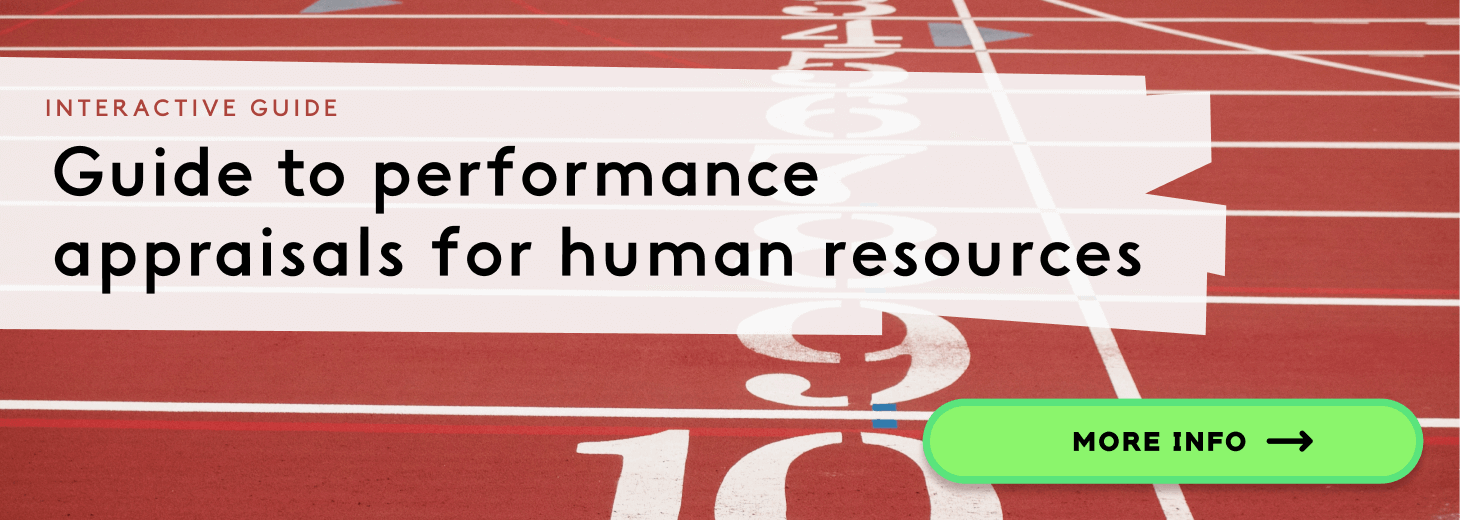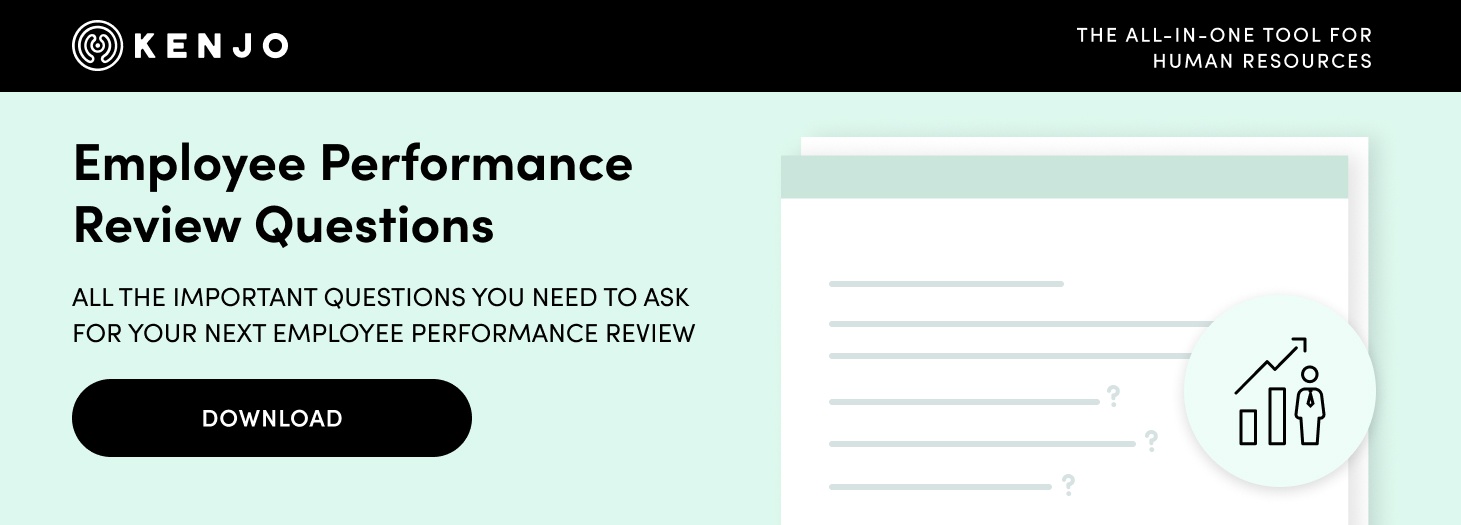How to do a performance review? Step by step guide

How to carry out a performance review? Assessing and measuring the performance of others is a delicate process; yet there are different performance appraisal methods that can help us set expectations and measure results.
As Kenjo provides performance appraisal software, we have spoken to many human resources managers who confess that they have some unfinished business in relation to performance reviews. Technology like ours can help you organise your processes with internal or remote teams, but this is useless if you don’t create a framework that everyone can work from the outset. It is also important to know the new trends in performance management.
We take a look at a step-by-step approach to this process below, from planning objectives to writing the performance reviews themselves. Remember that you can dowload our performance review template.
1. Set objectives
At the start of every year, or when a new employee joins the company, it's important to get together and set objectives for measuring the performance of every company employee.
The SMART framework is the best way to do this to ensure that each objective meets the following criteria:
- Specific.
- Measurable.
- Attainable.
- Relevant.
- Timely.
For example:
Gain 10 new clients in the next six months by organising five professional events. This will therefore boost the brand’s business and gain more visibility.
- Specific: gain new clients.
- Measurable: 10 clients.
- Attainable: organising five professional events.
- Relevant: increase business and gain visibility.
- Timely: in six months.
This could be one of the objectives for a sales director, for example, or for a member of the company’s sales team. It meets the SMART criteria and also provides a basis for reviewing their performance. If they gain 10 clients, they will have successfully achieved their target. If they gain five after the six month-period, then they will have reached 50% of their objective. Establishing a measurable objective means that their work can also be evaluated objectively.
2. Set clear expectations
Performance reviews can generate anxiety and nerves among employees if the process, and what's expected of them, is not clearly set out in advance. It’s therefore very important to manage expectations properly, and in good time.
Dick Grote, author of the book "How to be good at performance appraisals”, speaks of the importance of pre-review sessions with each employee to define objectives and explain the evaluation process, consequences, etc. “This produces an immediate improvement in performance as all staff know what their manager expects of them”, he explains. He also adds: “this gives you the right to hold each employee responsible at the end of the year.”
Employees’ salary expectations are often raised as a result. So, it’s equally as important to explain whether or not there will be any compensation linked to the results achieved. Some companies offer salaries that vary in accordance with objectives (individual or global) and many others that don’t.
To avoid confusion, every company should ideally create its own plan and communicate it transparently to the workforce. Criteria for salary increases should be clearly defined, when they can be expected, what happens when the objectives are fully met, etc.

3. Define the key performance assessment indicators
When deciding how to carry out a performance review, performance assessment indicators must be defined. These are key metrics that enable to you to quantify the quality of the work carried out by employees. These metrics will be in line with the skills to be analyzed in the performance review.
In addition to measuring the achievement of individual objectives, you should also consider other key aspects for the organisation and employee development. These KPIs can be linked to productivity, quality and training metrics, for example.
- Average task completion time.
- Revenue generators.
- Overtime hours worked.
- Number of errors.
- Defective products.
The key is to focus on metrics that are clearly definable, measurable and that the employee is able to control. So, it’s important to set specific KPIs for each and every role in the company and, in some cases, even adapt them to the performance expectations of specific individuals.
For example: it wouldn’t be fair to evaluate a HR manager on the basis of the talent retention rate because they aren’t directly responsible for employees who leave of their own accord.
All these metrics should be ideally gathered in one results dashboard that enables you to see, at a glance, the work carried out by an employee over the period of time in question.
4. Notify employees so they can prepare for the review
Book the performance review in advance and around two weeks before the face-to-face meeting, ask the employee to write down things they have done during the last year that they’re proud of. This will help them refresh their memory and - as Grote says - “add a positive approach to what is sometimes considered as a negative experience.”
In the days leading up to the appraisal, request feedback from the employee’s colleagues and look over their scores, previous reviews, etc. In other words, prepare for the meeting and put your final review in writing.
Send a copy of the appraisal to the employee one hour before the meeting. This gives them time to assimilate it privately and they will be better prepared to focus at the time. “When people read other people’s opinions of them, it’s normal that all kinds of emotions will arise.” says Grote.
5. Set a tone for the appraisal
Performance appraisals usually turn into a feedback sandwich where positive comments alternate with criticism, achievements, etc. So, if there is no clear message, the employee being reviewed may end up confused about whether they’re doing well, or not.
Grote encourages us to be direct: “Most people are good professionals so we should concentrate on the things they have done well” he explains. According to experts, this method tends to motivate those who are already competent at their job.
Nevertheless, there are those whose performance is less than expected and he recommends that we avoid sugar coating the bad news. Performance reviews provide an opportunity to face the problems, put poor performance issues on the table and demand improvements. “As time goes by, this person will not get promoted or receive a salary increase. You’re not doing them any favours by avoiding their weaknesses.
6. Ask the employee to share a self-assessment
Another objective of these meetings is to invite the employee to reflect on their own performance and write a self-assessment. This not only makes them feel they have something to say in the meeting, but also makes them take a look in the mirror and analyse what they’ve done over the past twelve months.
We can send employees a series of questions to answer as a guide:
- How have the past twelve months been for you?
- What were your main achievements?
- What are you most proud of this year?
- Which tasks or projects have you found the most satisfying?
- What did you most enjoy?
- What were the main challenges?
- What were you most frustrated or disappointed by?
- In which areas do you feel you have the most potential for growth?
- What do you expect from this appraisal?
If the employee has very specific concerns or problems that require a separate conversation, it’s better to organise a meeting specifically to address them It’s important to remain focussed on the appraisal.
7. Use constructive criticism during the appraisal
Constructive criticism is an assessment which is given with the intention of helping another person. The aim is to encourage a positive change that brings benefits, in this case, to both parties.
As we mentioned previously, it’s essential to get to the point. As the Harvard Business Review points out, for example:
- You shouldn’t say: “You’ve got to be more proactive”.
- The most appropriate thing to say would be: “You should take more initiative and call potential clients to generate more business.”
The first comment sounds more like a complaint. With the second, however, we’re helping the employee by saying they have to improve while also offering a solution.
After discussing the employee’s strengths and achievements, it’s important to ask them what they think about their performance. “In most cases, we’re dealing with mature adults who will admit their genuine concerns.
This question could be the perfect way to sway the conversation towards areas for improvement and offer constructive criticism.
8. Structure the performance review conversation
When deciding how to conduct the performance review, the structure of the conversation needs careful consideration. The reviewer leads the meeting, so they must be the one in control.
The meeting should generally start by talking about the results of the review and giving the employee the opportunity to do their own assessment (based on the questions we mentioned previously). It’s also important to go over the objectives established for this period and the results that were obtained.
If the review has been a positive one overall, we should go over the employee’s strengths but also look at areas for improvement, offering constructive criticism. A training plan or mentoring are possible outcomes of the latter.
It’s vital that the professional leaves the meeting room with all the tools they need to meet expectations and, at the same time, feel renewed and motivated to face the next period.
9. Conclude the meeting by outlining actions to be taken
The last part of the meeting should focus on setting the employee’s next objectives. Both parties should agree on goals for the next period, according to their performance.
Use the SMART method to obtain specific results that encourage actions through specific and realistic tasks. It’s essential that the employee knows what’s expected of them during the next period and what they have to do to achieve it.
This meeting can also lead to a training or educational plan to improve the employee’s weaknesses or to acquire the skills they need to grow within the company and meet the agreed objectives.
10. Summarise the performance review in writing
The results of the performance review and the mutually agreed steps to be taken must be put in writing.
This should include a few introductory paragraphs with the reviewer’s general comments, the results obtained and the mutually agreed steps to be taken.
You can see an example below:
Ana is exceeding our expectations in her junior role. She has a positive attitude, works well under pressure and always takes care of the finer details.
Ana works well in a team and shows leadership among her younger colleagues. She has volunteered to take part in different projects and developed good relationships with many clients.
Ana has strong communication skills and is keen to advance her career. She would benefit from a training and development plan to broaden her knowledge of legal and financial areas.
General advice:
- Offer regular feedback on an informal basis: in general, it’s important to evaluate the entire year’s work and give feedback along the way. This reduce the pressure of appraisals and surprises.
- Be sincere: don’t be afraid to address problems directly, it’s the only way to solve them.
- Meet face to face: the written review should be a summary of what has been discussed in an in-person meeting between the reviewer and employee. Sending the document by email isn’t enough. Sitting face-to-face and listening to what the employee has to say is paramount.
- Use examples: when assessing the employee’s work, it’s important to give specific examples that help them understand what we’re talking about. This also shows that we take notice of them.
- End on a positive note: it’s vital that the employee receives the motivation they need to meet the challenges and objectives set out in the meeting. A word of encouragement at the end will help them push ahead.
- Choose your words carefully: pay attention to the words you choose in your review, to ensure that you get the right message across. Grote states that “good” or “excellent” are not enough and that we must use measurable terms.
The reviewer should file the documents for future occasions and send it to the employee under review, so that they can refer to it whenever they need to.



